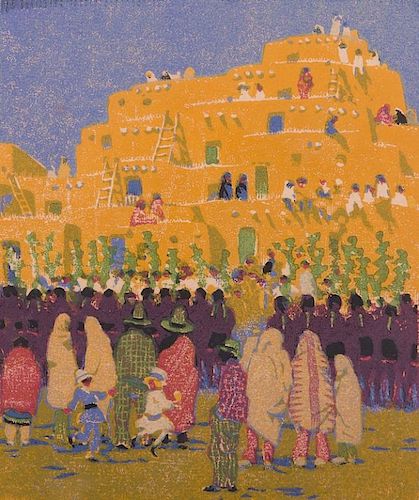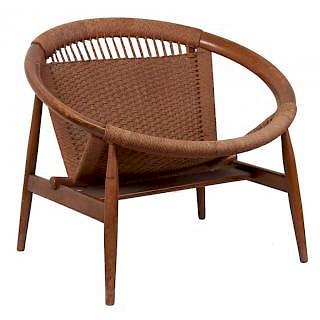Gustave Baumann "San Geronimo-Taos" Woodblock
About Seller
320 Pantops Center
Charlottesville, VA 22911
United States
Bremo Auctions is a full service auction house located in the historic town of Charlottesville VA. While our primary focus is on fresh-to-the-market property from distinguished Virginia Estates, institutions and private collections our individualized approach is tailored to meet the needs of each cl...Read more
Two ways to bid:
- Leave a max absentee bid and the platform will bid on your behalf up to your maximum bid during the live auction.
- Bid live during the auction and your bids will be submitted real-time to the auctioneer.
Bid Increments
| Price | Bid Increment |
|---|---|
| $0 | $5 |
| $50 | $10 |
| $200 | $20 |
| $500 | $50 |
| $1,000 | $100 |
| $2,000 | $250 |
| $5,000 | $500 |
| $10,000 | $1,000 |
| $50,000 | $5,000 |
About Auction
Feb 20, 2016 - Feb 21, 2016
Bremo Auctions info@bremoauctions.com
- Lot Description
Gustave Baumann (American, June 27, 1881-October 1971) "San Geronimo-Taos" color woodblock print; signed "Gustave Baumann" with hand in heart chop mark to bottom right as well as numbered "74/125"; titled to bottom left; framed and matted under glass; measures approximately 17-1/2" x 16" with frame and has a sight image of approximately 8-1/2" x 6-3/4"; in Very Good condition.Provenance: Property of private Central Virginia collection.Gustave Baumann was an American printmaker and painter, and one of the leading figures of the color woodcut revival in America. His works have been shown at the New York Metropolitan Museum of Art, the National Gallery of Art in Washington DC, and the New Mexico Museum of Art. He is also recognized for his role in the 1930s as area coordinator of the Public Works of Art Project of the Works Progress Administration. Born in Magdeburg, Germany, at the age of 10, he moved to the United States with his family, and by age 17 he was working for an engraving house while attending night classes at the Art Institute of Chicago. He returned to Germany in 1904 to attend the Kunstgewerbeschule in Munich where he studied wood carving and learned the techniques of wood block prints. After returning to the U.S. he began producing color woodcuts as early as 1908, earning his living as a graphic artist. He spent time in Brown County, Indiana as a member of the Brown County Art Colony, developing his printmaking technique. He followed the traditional European method of color relief printing using oil-based inks and printing his blocks on a large press. This contrasted with the trend at the time of many American artists to employ hand rubbed woodblock prints in the Japanese traditional style. By this time he had developed his personal artist's seal: the opened palm of a hand on a heart. His Mill Pond is the largest color woodcut produced at the time. These were shown at the 1915 Panama-Pacific International Exposition where Baumann won the gold medal for color woodcut. In 1918, he headed to the Southwest to inquire into the artists' colony of Taos, New Mexico. Thinking it too crowded and too social, he boarded the train which stopped in Santa Fe. Its art museum had opened the previous year and its curator, Paul Water, persuaded Baumann to stay in Santa Fe. In Santa Fe, Baumann became known as a master of woodcuts and marionette-making, also producing oils and sculpture. His work depicted southwestern landscapes, ancient Indian petroglyphs, scenes of Pueblo life, and gardens and orchards. Baumann married Jane Devereaux Henderson on June 25, 1925. Their daughter, Ann, was born on July 31, 1927. He remained in Santa Fe for more than fifty years until his death there in 1971.
- Shipping Info
-
Shipping is the responsibility of the purchaser. Upon request, our staff will provide the list of shippers who deliver to destinations within the United States and overseas. Some property that is sold at auction can be subject to laws governing export from the U.S., such as items that include material from some endangered species. Import restrictions from foreign countries are subject to these same governing laws. Granting of licensing for import or export of goods from local authorities is the sole responsibility of the buyer. Denial or delay of licensing will not constitute cancellation or delay in payment for the total purchase price of these lots.
-
- Buyer's Premium



 EUR
EUR CAD
CAD AUD
AUD GBP
GBP MXN
MXN HKD
HKD CNY
CNY MYR
MYR SEK
SEK SGD
SGD CHF
CHF THB
THB















